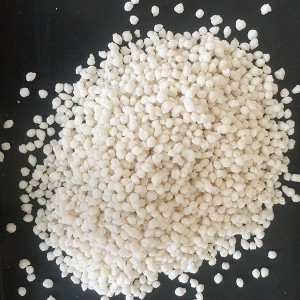Maximizing Crop Yields: Understanding the Application Rate of Potassium Sulphate Powder 52%
1. Introduction
In agriculture, maximizing crop yields is a top priority for farmers and growers. An important part of achieving this goal is the correct application of fertilizer. Potassium sulfate, commonly known as SOP (sulfate of potassium), is an important source of potassium in plants. Understanding the 52% application rate of potassium sulfate powder is critical to ensuring optimal crop growth and yields.
2. Understand potassium sulfate powder 52%
52% Potassium Sulphate Powder is a high-purity water-soluble fertilizer that provides plants with two key nutrients: potassium and sulfur. The 52% concentration represents the percentage of potassium oxide (K2O) in the powder. This high concentration makes it an effective source of potassium for plants, promoting root development, disease resistance, and overall plant vitality. Additionally, the sulfur content in potassium sulfate is essential for the formation of amino acids, proteins, and enzymes in plants.
3.Potassium sulfate dosage
Determining the appropriate application rate of potassium sulfate is critical to achieving the desired results in crop production. Factors such as soil type, crop type and existing nutrient levels must be considered when calculating application rates. Soil testing is an important tool for assessing soil nutrient levels and pH, helping to determine a crop's specific needs.
Potassium sulfate application rates are usually measured in pounds per acre or kilograms per hectare. It is important to follow recommended application rates provided by agricultural experts or based on soil test results. Over-application of potassium sulfate can lead to nutrient imbalances and potentially harm the environment, while under-application can result in insufficient crop nutrient utilization.
4. Benefits of SOP Powder
Potassium sulfate powder has a variety of benefits that make it the first choice of many farmers and growers. Unlike other potash fertilizers such as potassium chloride, SOP does not contain chloride, making it suitable for chloride-sensitive crops such as tobacco, fruits and vegetables. Additionally, the sulfur content in potassium sulfate helps improve the flavor, aroma, and shelf life of fruits and vegetables.
Additionally, potassium sulfate is highly soluble in water, allowing plants to absorb the nutrient quickly and efficiently. This solubility makes it suitable for a variety of application methods, including foliar sprays, fertigation and soil applications. The absence of insoluble residues in the fertilizer ensures it can be easily applied through irrigation systems without the risk of clogging.
5. How to use 52% potassium sulfate powder
When using 52% Potassium Sulfate Powder, recommended usage guidelines must be followed. For soil application, the powder can be spread and incorporated into the soil before planting or applied as a side dressing during the growing season. Application rates should be based on the potassium requirements of the specific crop and soil nutrient levels.
For foliar application, potassium sulfate powder can be dissolved in water and sprayed directly onto plant leaves. This method is particularly useful for providing rapid potassium supplementation to crops during critical growth stages. However, it is important to avoid using the powder in high heat or direct sunlight to prevent leaf burn.
In fertigation, potassium sulfate powder can be dissolved in irrigation water and applied directly to the root zone of plants. This method allows for precise nutrient delivery and is particularly beneficial for crops grown in controlled irrigation systems.
In summary, understanding the 52% application rate of potassium sulfate powder is critical to maximizing crop yields and ensuring overall plant health and productivity. By considering factors such as soil conditions, crop needs and recommended application methods, farmers and growers can harness the full potential of potassium sulfate and achieve the best results from their agricultural activities.
K2O %: ≥52%
CL %: ≤1.0%
Free Acid(Sulfuric Acid) %: ≤1.0%
Sulphur %: ≥18.0%
Moisture %: ≤1.0%
Exterio: White Powder
Standard: GB20406-2006

Growers frequently use K2SO4 for crops where additional Cl -from more common KCl fertilizer- is undesirable. The partial salt index of K2SO4 is lower than in some other common K fertilizers, so less total salinity is added per unit of K.
The salt measurement (EC) from a K2SO4 solution is less than a third of a similar concentration of a KCl solution (10 millimoles per liter). Where high rates of K?SO??are needed, agronomists generally recommend applying the product in multiple doses. This helps avoid surplus K accumulation by the plant and also minimizes any potential salt damage.
The dominant use of potassium sulfate is as a fertilizer. K2SO4 does not contain chloride, which can be harmful to some crops. Potassium sulfate is preferred for these crops, which include tobacco and some fruits and vegetables. Crops that are less sensitive may still require potassium sulfate for optimal growth if the soil accumulates chloride from irrigation water.
The crude salt is also used occasionally in the manufacture of glass. Potassium sulfate is also used as a flash reducer in artillery propellant charges. It reduces muzzle flash, flareback and blast overpressure.
It is sometimes used as an alternative blast media similar to soda in soda blasting as it is harder and similarly water-soluble.
Potassium sulfate can also be used in pyrotechnics in combination with potassium nitrate to generate a purple flame.






